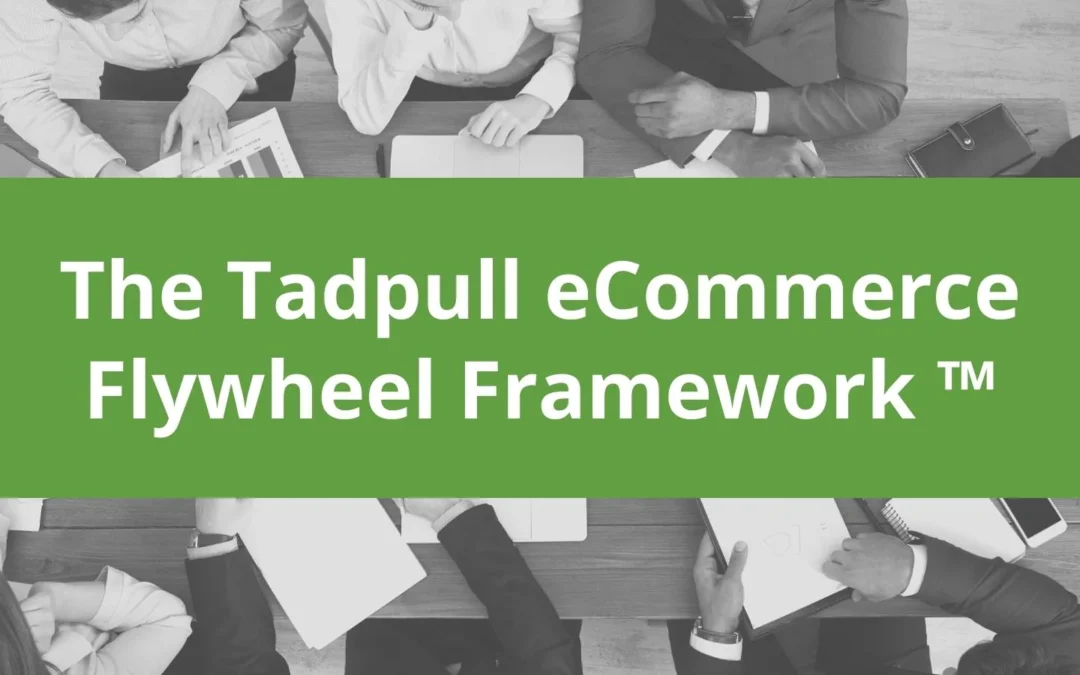“what truly set the big winners apart was their ability to turn initial success into a sustained flywheel, even if they started out behind the pioneers.” ― Jim Collins, Turning the Flywheel: A Monograph to Accompany Good to Great
Flywheels are magical devices. They start with a few key inputs. Each one starts to feed the other and slowly but surely the wheel starts to turn a little bit over a year or two.
In eCommerce, most people give up in this phase because they don’t see instant results in months or quarters. They buy into the fallacy of get rich quick. But neither Apple or Rome was built in a day.
Often they don’t understand the key inputs to building a profitable online business which spans marketing, operations and finance driven by a remarkably different set of cultural values.
However, if these inputs are actively managed something amazing starts to happen: growth compounds as the wheel turns faster and faster. Momentum begins to take over doing the heavy lifting. It’s hard and requires a long view but when it happens it’s a truly magical event.
Some call this exponential growth but if you look at any exponential curve it looks flat for a very, very long time.
The 4C’s are the new 4P’s
Those from marketing are often taught the 4P’s of marketing: Price, Place, Product, and Promotion. A relic since the 1960s, this framework fails to take into account the amazing datasets we have at our fingertips and the speed at which we can move off the data with today’s cutting-edge tools and artificial intelligence.
Think of the 4C’s as a solar system of sorts with the outer planets of the flywheel orbiting the sun which is Culture. Without the culture aligned, the flywheel simply never starts to spin automatically as things fly off into space.

I think we have a very good culture virtually everyplace in Berkshire. I hope it’s everyplace. This is what we are looking for, and it’s more a question of culture than controls. If you have a good culture, I think you can make the rules pretty simple. —Warren Buffett
Culture
Today’s leading eCommerce businesses require a fundamentally different culture built on speed and data which speaks to why so many traditional businesses can’t cross this digital divide (see Sears, K-Mart, JC Penney, etc). These new vanguard brands are the Warby Parkers and Airbnb’s who believe in testing ideas, sourcing great talent and treating technology as disposable guided by an obsession with delighting their customer in a digital experience by:
- Customer obsession
- Appreciation and belief in using and building powerful datasets as a key asset to grow the business and provide protection against competitors
- Ability to move quick and test ideas across marketing, products
- Supportive of failure and trying new things
- Seeking out and growing competent technical talent
- Disposing of their technology but not their datasets
Customers
Building off the Culture value of customer obsession, eCommerce leaders track their customer base as a leading indicator for the value of the business and manage this as a key asset in the following ways:
- Designing great digital experiences to ensure loyalty across devices, communities, content, and post-purchase
- Gut checking these assumptions with custom mathematical models for the lifetime value of these customers and the corresponding financial returns
- Meticulously segment and personalize across acquiring and retaining the best customers with smart digital marketing campaigns

Campaigns
Using the idea of personalization and empathy for customers, digital marketing campaigns are designed and automated for not only acquiring but also retaining only the best customers by:
- Meeting new and returning customers in their preferred channels of search engines, social media, email/sms, and paid ads across their online journey
- Adjusting to seasonal inputs to introduce fun and reward loyalty
- Effectively moving Catalog based on inventory levels and margins to show true financial value of the marketing engine to the online business.

Catalog
With customer and campaigns humming, successful eComm businesses can then match their product catalog to customer needs in the following ways:
- Understanding what customers purchase in a sequence of buys
- How to move inventory to the right segment based on preferences like size, color, or usage of the product (personalization)
- Effectively producing profitable results by working across marketing and operations/finance

Where to Start
Get your culture aligned first. Don’t worry about growth hacking viral campaigns with influencers on a social platform. Or the latest plug-in for Shopify.
Those are distractions initially.
Assuming you have the cultural fundamentals listed above, next start with the following:
- Customers: Empathize with their afflictions and aspirations (we all go online to be entertained or educated). Next, take a hard look at what a customers’ lifetime value is with your brand. This can be modeled mathematically based on how recent customers purchased, how frequently and how much. If you have a business where your average order value = customer lifetime value (one and done), you have to be very smart with your money as you will always be in acquisition mode.
- Campaigns. 76% of customers use more than three channels in the 24 hours before they buy. So, approach your digital marketing campaigns like you would baking cookies. You need a little flour, some butter, a pinch of baking soda to get everything to taste right. Specifically, how SEO works with retargeting ads works with email and never, ever don’t build exclusively on one channel – sooner or later it will show fluctuations and can wreck your business.
- Catalog. Often ignored due to marketing and operations teams speaking past each other. Know your margins before you ever run an ad on a product. Know what customers buy first and second and so on as they get introduced to your brand. Think about selling a lot of something at low cost or selling a few with huge margins at a higher cost. Economics tells us there is no free lunch, so this is an optimization game with gold nuggets in your financial data.
Bonus: Your CFO and board will love you if you can speak in finance terms and prove you understand how to build a business without lighting cash on fire.
Below, you can see a sample Google Data Studio dashboard with all of these pieces coming together to allow you to pull out the most valuable insights for making business decisions. We pulled Google merchant data for this example, but we invite you to connect your own Analytics account to see how this framework will best help you.
However, we built this dashboard to only represent a fraction of the possibilities surrounding data-driven digital marketing. The next step is using AI to turn out insights and strategies automatically. If you’re interested in learning more about how we do this, drop us a line and we’re happy to help.

